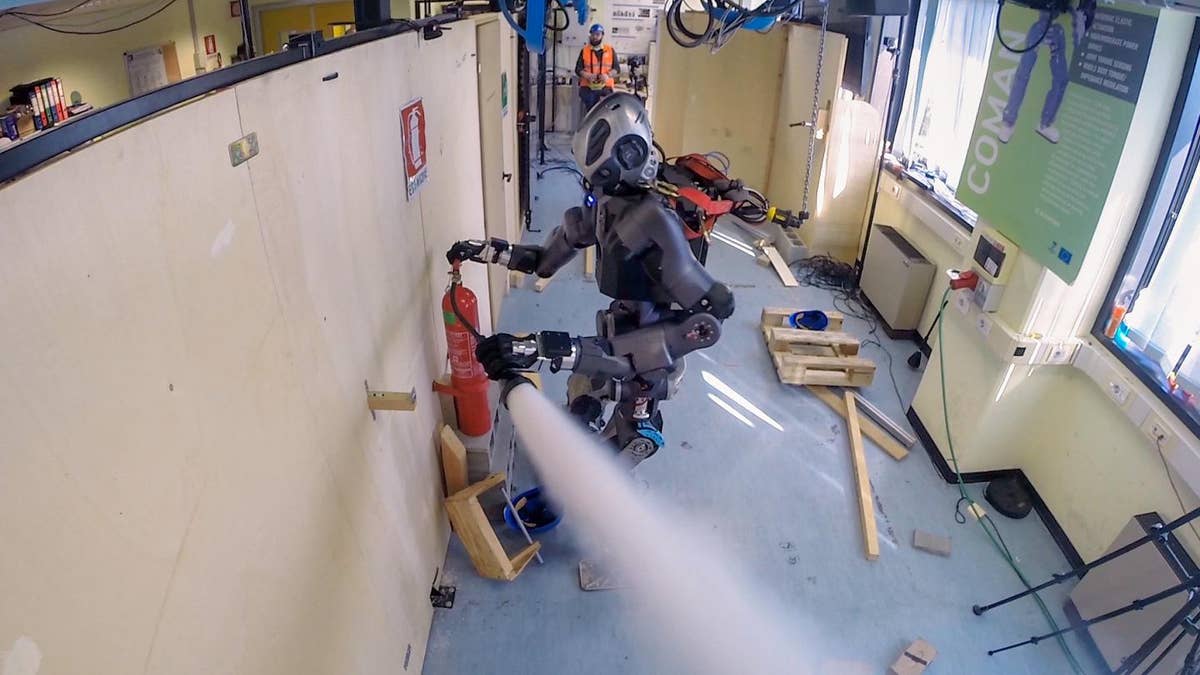
The WALK-MAN humanoid robot has been developed to support emergency response teams. The robot is also able to activate an extinguisher to eliminate the fire. (CREDIT IIT-Istituto Italiano di Tecnologia)
A WALK-MAN could one day save your life. No, we’re not talking about the now-retro Sony audio cassette player, but rather a humanoid robot developed by engineers at IIT-Istituto Italiano di Tecnologia, supported by funding from the European Commission. Started way back in 2013, the WALK-MAN project is designed to serve as a robot emergency responder which could be used to assist firefighters.
It is able to locate the position of fires, walk toward the offending blaze, and then activate an extinguisher. While it is doing this, it collects images from its environment and sends them back to a human emergency team, who can use the data to analyze the situation and remotely guide the robot. This remote control is carried out by an operator using a virtual interface and sensorized suit, which allows them to relay actions to the avatar-like WALK-MAN robot.
“The robot will demonstrate new skills, including powerful manipulation, robust balanced locomotion, and physical sturdiness,” project coordinator Nikolaos Tsagarakis told Digital Trends. “To achieve this, the project integrates suitable technologies in compliant robot design, manipulation and locomotion control, perception, and motion planning to develop a humanoid robot capable of walking inside human oriented infrastructures, manipulating human tools and interfaces, and addressing disaster response in hazardous environments.”
The latest iteration of WALK-MAN, now in its final evaluation stages, boasts an upgraded upper body that is lighter and more powerful than the first version. The new upper body allowed the team to reduce the overall weight of the robot from 293 to 223 pounds. Despite this reduction, its arms have 40 percent higher strength with a payload capacity of 22 pounds. The onboard computational power has also been increased, along with the robot’s software, to allow it to perform tasks and actions faster than the original system. Its speed is additionally helped by the reduction in weight, while the reduced dimensions of the upper body means it can now more easily operate in human environments.
More From Digital Trends
During a test run, WALK-MAN dealt with a scenario intended to replicate an industrial plant that’s been damaged by an earthquake. With gas leaks and fires making the situation too dangerous for humans, the robot was guided through a damaged room and asked to perform four tasks. These included opening and traversing the doorway, locating the valve which controlled the gas leak and closing it, removing debris in its path, and finally identifying the fire and activating an extinguisher. It passed with flying colors!
